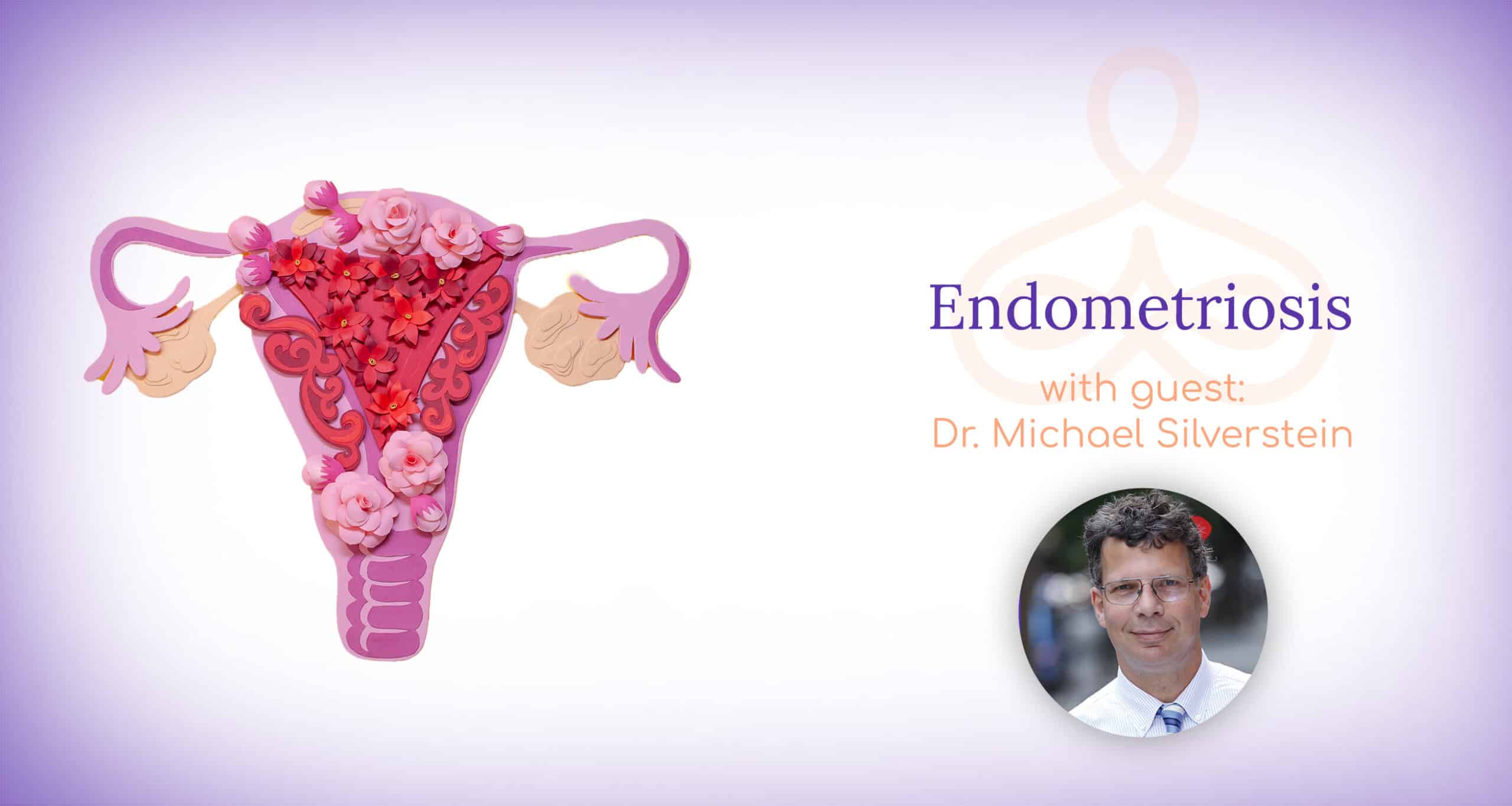Dr. Nathan Fox speaks with Dr. Michael Silverstein, a gynecologist at MFM about endometriosis, what causes it, how it is diagnosed, and possible treatment options.
What is Endometriosis?
Endometriosis is a disorder in which tissue similar to the tissue that lines the uterus grows outside of the uterus. It usually involves the ovaries, fallopian tubes, and the tissue lining the pelvis, but can also affect areas beyond where pelvic organs are located, such as the intestines and scars from prior abdominal incisions. Endometriosis is known to cause pain during menstrual periods and may also cause fertility issues.
To better understand how endometriosis works, Dr. Silverstein explained regular menstruation versus endometriosis, visualizing it with a gloved hand. “If you make a fist and look at it, that’s how the uterus is sized,” he explained. “If you open your hand and look inside and you are wearing a glove, the inside of the glove is the lining of the uterus. That’s the endometrium. Every month, it grows and it awaits an implantation for a pregnancy. And then in the absence of implantation, it sloughs, and that’s the menstruation.”
In cases of endometriosis, this process differs. “With endometriosis, those glands have somehow gotten outside the uterus,” he explained. “The endometrium grows and awaits an implantation. In the absence of an implantation, its sloughs, but instead of having a channel or an egress of the cervix, it sloughs into the peritoneal or abdominal cavity and causes dire pain.”
How is Endometriosis Diagnosed?
In many cases, endometriosis is found incidentally during a cesarean or laparoscopy. If you are presenting with endometriosis symptoms and your doctor wishes to further assess your condition, they may perform a pelvic exam, ultrasound or an MRI. Definitive diagnosis is only with direct visualization and biopsy via laparoscopy or laparotomy.
The main symptom of endometriosis is pelvic pain, most often associated with menstrual periods. Other signs of endometriosis may include pain with intercourse, pain with bowel movements or urination and infertility.
The severity of a patient’s pain may also not be a reliable indicator of the severity of their condition. For example, someone could have mild endometriosis with severe pain, while another person may have severe endometriosis with little pain.
“The overall assessment seems to be roughly 10% of women have endometriosis,” said Dr. Silverstein. “Does that mean 10% of women have chronic debilitating pelvic pain? Absolutely not. And so many times, it’s asymptomatic.”
Endometriosis Treatment Options
Treatment for endometriosis depends upon the severity of the condition at the time of diagnosis. For mild discomfort, medications to stop menstruation (such as OCPs) are most frequently prescribed. Surgery is often relegated to those with severe symptoms so that large lesions can be excised.
Medical professionals have found that the most effective way to reduce endometriosis pain is to avoid the sloughed-away uterine lining from entering the peritoneal cavity. In order to accomplish this, menstruation must be stopped. Hormonal treatments are a common tool to prevent the pituitary from releasing the hormones that cause ovulation and menstruation.
If hormonal options fail, doctors will then have to focus on the pituitary gland which releases the hormones that cause ovulation and menstruation. “The problem with those medications, the ones that prevent that from happening, if you’re shutting off the hormones that come from the pituitary, you’re making the patient functionally menopausal,” explained Dr. Silverstein. “And that often, especially in young women, causes the well-known tetralogy of menopausal symptoms that are really uncomfortable: Vaginal dryness, hot flashes, mood instability and insomnia. These interventions are not designed for long-term use.”
The last option for endometriosis treatment is surgery. When performed by a skilled surgeon, many patients find great relief from their painful symptoms. “I would encourage anyone who’s possibly having surgery for endometriosis to make sure it’s done by an expert.” Said Dr. Fox.
Schedule an Appointment
At Carnegie Women’s Health, we are dedicated to compassionate care and can help you get the right treatment for endometriosis. Schedule an appointment today to discuss your treatment options.

